After reaching Winnipeg, our first priority was to visit the provincial capitol, known as the Manitoba Legislative Building.
Our first glimpse revealed a massive building in a large park-like setting.
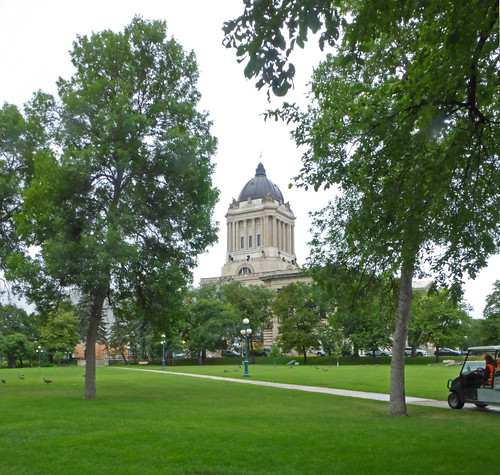
We parked the car and walked out toward the front; Linda continued up onto the steps of the building while I moved out toward the entrance to the ground to capture the whole building. She is visible in both of the following pictures.
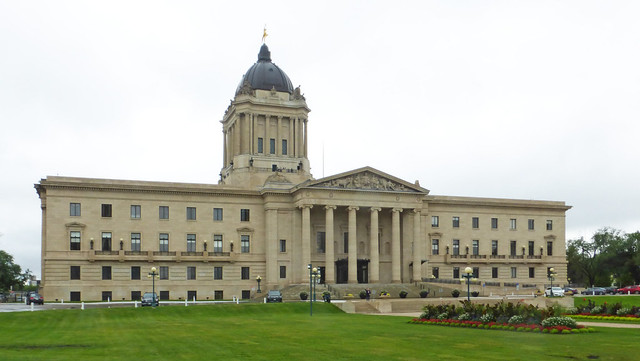
Atop the dome, there is a seventeen foot tall statue of a golden winged messenger, variously described as the Roman god, Mercury, or "like Mercury." Cast in bronze in France during World War I, he had a long multi-year voyage before making it to Winnipeg, arriving in 1919. He was only bronze up until 1951, when he was upgraded with gold leaf.

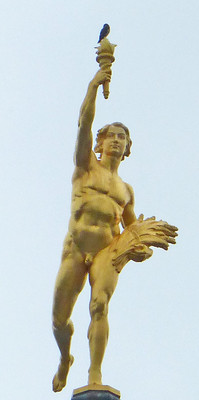
The grounds surrounding the 300 foot wide building occupy 30 acres and have a few statues of local interest but also include a statue of the Scottish poet, Robert Burns, who is held in high regard in Canada.
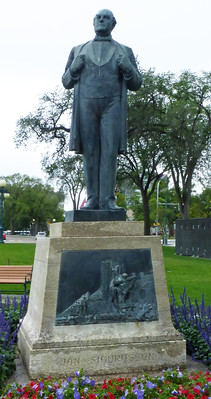
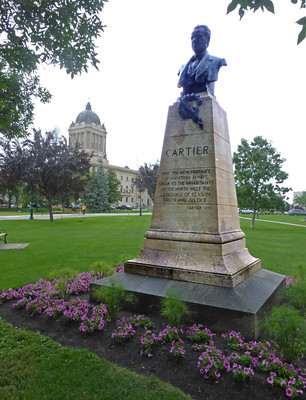

We then passed by the city's railroad station and headed down toward an area known as "The Forks" near the French Quarter where the Red River and Assiniboine River meet.


We first visited the current Cathedral of St. Boniface (1972) located
behind the 1906 facade visible at the very bottom of this next photo.

In front of the cathedral lies the grave of controversial Louis Riel, "father of Manitoba." Riel was executed after conviction for treason in 1885.
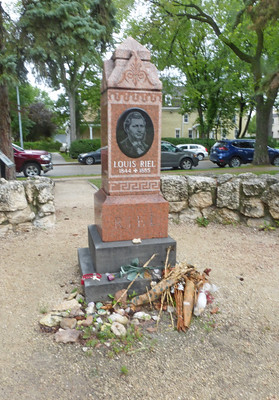

The cathedral of St. Boniface has a long history, growing with the surrounding community until a large stone building was constructed in 1906. This building was destroyed by fire in 1986 leaving only the present facade and a bit of surrounding wall. The facade was preserved and a new cathedral constructed behind it.


At the edge of the Cathedral park, near the riverfront, there is a monument to the fallen soldiers of World War I from the Canadian west. This served as a prod for me to pick up a book that I had on my "to read" shelf for some time, "Storm of Steel" by Ernst Junger, essentially a diary of four years in the trenches of northeastern France by a German officer - highly recommended.


Winnipeg's notable Human Rights Museum occupies a nearby plot of land easily reached by crossing a pedestrian bridge over the Red River.


The Forks area extends over to a touristy shopping and dining area where I was able to pick up a coffee mug for my travel-mug collection.
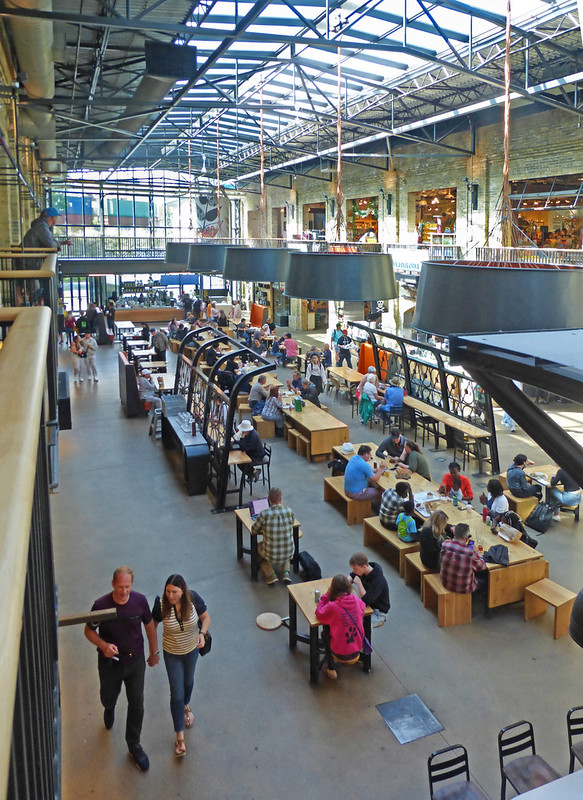
On our second day in the city, we traveled out to suburban Winnipeg to visit the Canadian Mint, an impressive, new building. They have a great many customers in the form of nations who have contracted out their coin manufacturing.

Here, I am standing beside the model for the obverse side of the Canadian dollar coin, affectionately known as the "loonie."

The mint offers carefully guided tours of the minting operation and has a variety of souvenir coins. I was surprised to learn that pianist Oscar Peterson was not only Canadian but also honored with his portrait on a limited edition run of Canadian dollars in 2022.
Our next stop was the Assiniboine Park along the riverfront.

There we strolled thorough a very well presented English Garden which leads to the Mol Sculpture Garden. There are a number of large Mol sculptures presented in lovely settings outside and a large collection of smaller sculptures inside.


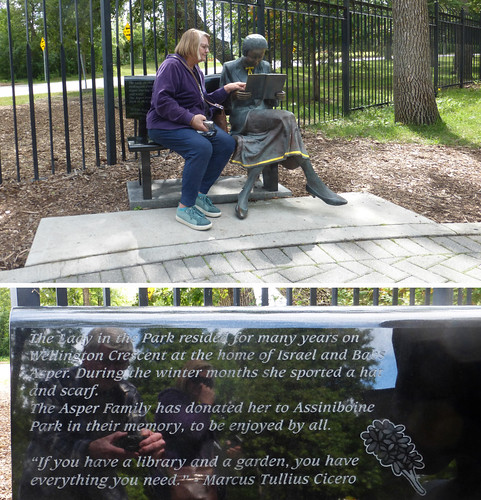




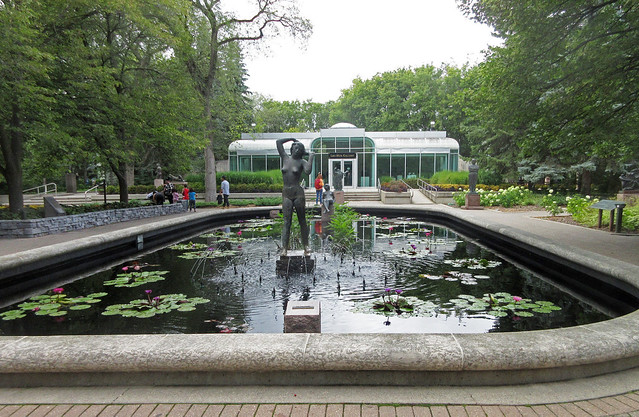
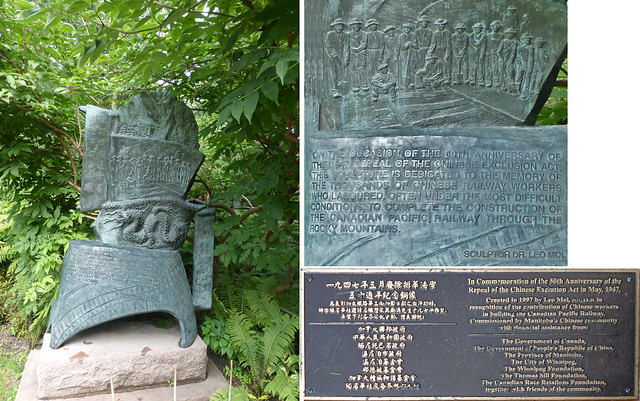

We concluded the day with a pleasant dinner in the lively "Little Italy" neighborhood just three miles from our hotel. A band was set up in the street and as a crowd gathered, they provided pleasant accompaniment.
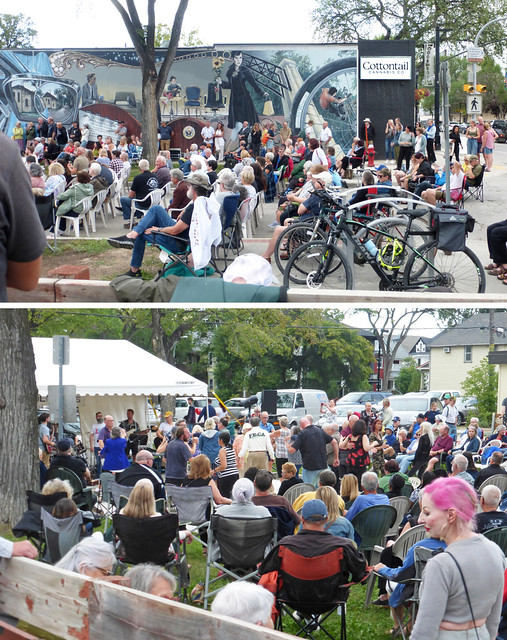






No comments:
Post a Comment